|
|
|
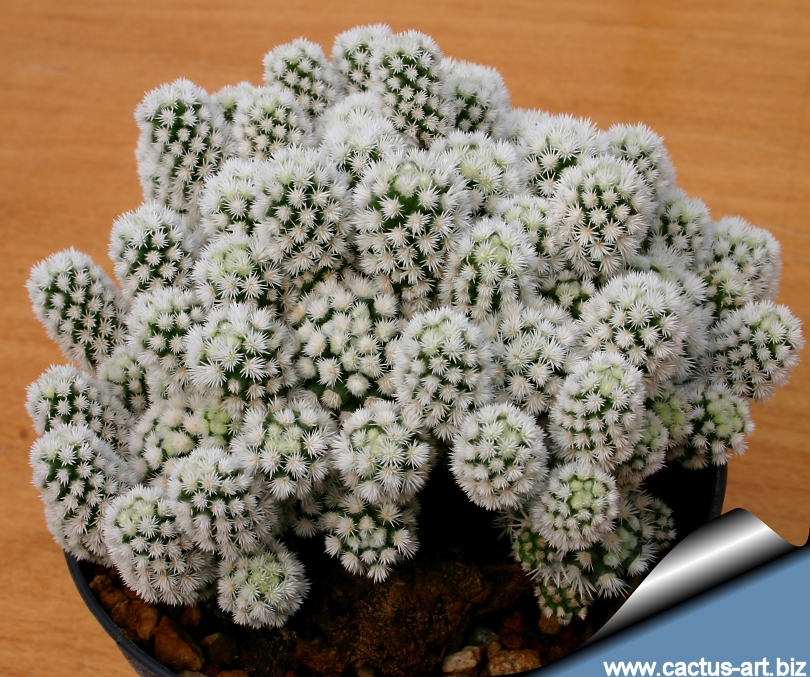
Very pretty mutation with shorter thicker white spines.
|
|
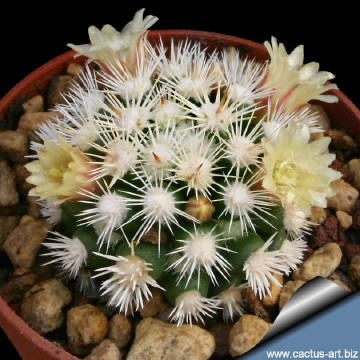 |
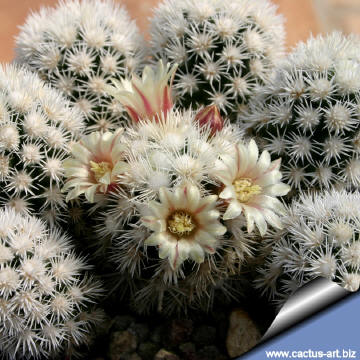
|
|
. |
|
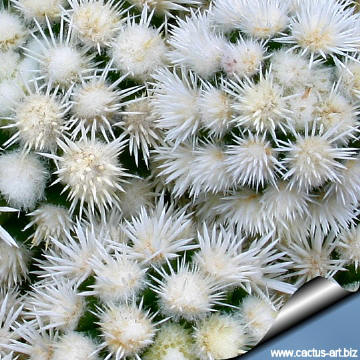 |
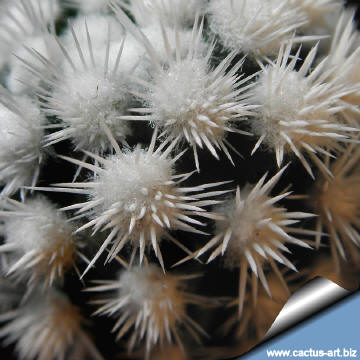 |
|
. |
|
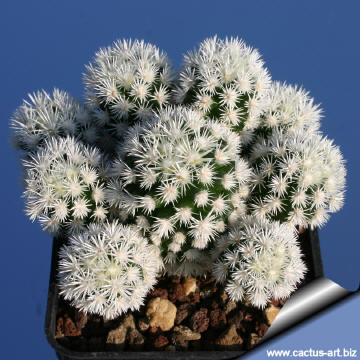 |
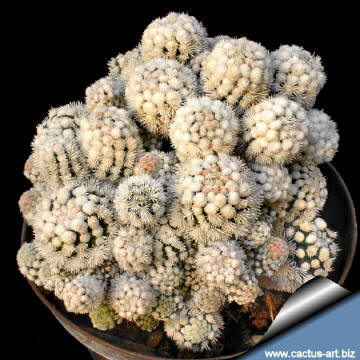 |
|
. |
|
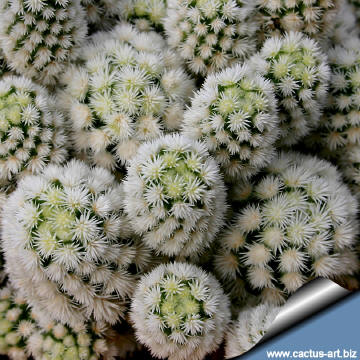 |
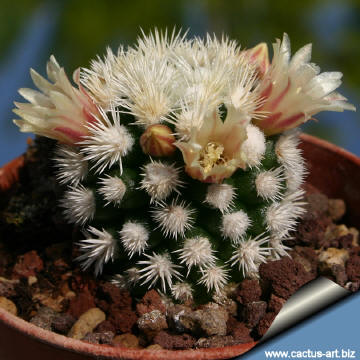 |
|
"Arizona Snowcap" shows an odd
thickening and shortening of the spines, resulting in a most attractive,
unusual looking plants.
|
|
Advertising
|
|
|
|
Family:
Cactaceae (Cactus
Family)
Mammillaria gracilis cv. Arizona Snowcap
Accepted
Scientific name:
Mammillaria vetula ssp gracilis
First description by
Pfeiffer, Allg. Gartenz. 6: 275 (1838)
cv. Arizona Snowcap
Origin:
Garden origin (Nursery
produced cultivar perhaps of
hybrid derivation).
It's a variant of M. gracilis and it is supposed that the
cultivars name indicate where it comes from.
Conservation status: Listed in
CITES appendix 2.
Synonyms:
(gracilis = fragilis)
- Mammillaria gracilis "Buenavista"
- Mammillaria gracilis mostruosa (monstroza, monstrosa,
monstruosa, monstrose form, monstros)
- Mammillaria 'Arisona Snocap'
- Mammillaria «regina» (reginae) Mammillaria gracilis "Снежный
шар"
|
|
Description: Mammillaria
"Arizona Snowcap" is a monstrous form of M. vetula ssp. gracilis
which is characterised by densely packed separate clusters of spines.
It looks so different to the wild species that it isn’t easy to
realise that they are related. This cultivar offsets generously from
sides and upper part of plant, which gives it a snowball appearance.
Mature group can reach 10-12 cm in diameter and 6-8 (10) cm in height.
Stem: Dark green almost concealed by the spines. Shortly
cylindrical, to 8 cm long, 1 - 3 cm in diameter and branching
profusely by sides, the offsets easily detaches.
Spines: Short, white, thick and more densely packaged than its
close relative, M. gracilis.
Flowers: Small, about 12 mm long and in diameter, cream-yellow
with pinkish o brownish midstripe in early spring.
|
|
|
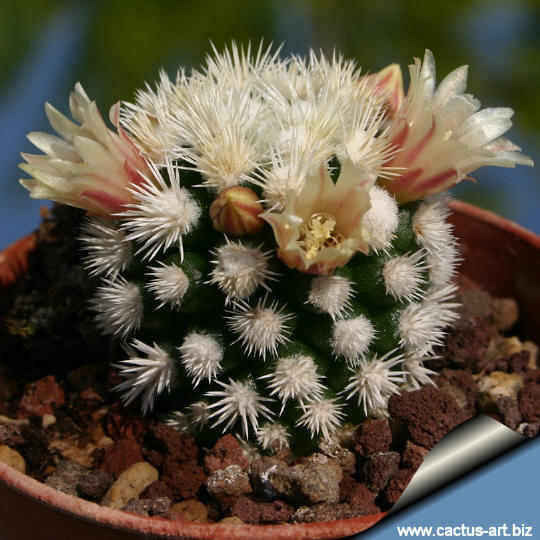
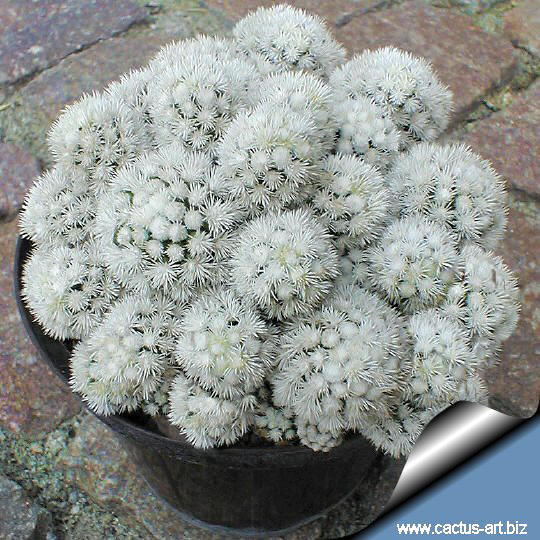
|
|
Today this cultivar is
very common, but rarely it is cultivated in the appropriate way
(full sun).
But the specimens
correctly
cultivated are really
admirable.
In the photo is shown a compact plant densely covered by candid
spines . A true beauty!!!
Cultivation: Readily
forms many offsets from sides and top. It does best in a mineral soil,
good drainage is essential. Water sparingly during the summer months
and keep dry in winter. It is a slow growing plant and once
established, it will be content in its position and with its soil for
years. Extremely hardy, can tolerate full sun, long periods of dryness
and light frost (-4° C). It can also grows in moderate shade, and a
plant that has been growing in shade should be slowly hardened off
before placing it in full sun as the plant will be severely scorched
if moved too suddenly from shade into sun.
Propagation: It is propagated exclusively from cutting during
spring or summer.

 |
|